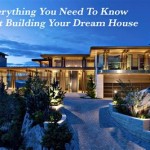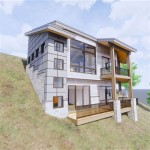New house planning refers to the comprehensive process of designing, organizing, and managing the construction of a new residential building. It involves a wide range of activities, from selecting the site and determining the budget, to obtaining permits and overseeing the construction process.
Proper planning is crucial for ensuring that the new house meets the needs and expectations of the occupants. For instance, it helps avoid costly mistakes, such as oversights in the design or inadequate consideration of the site conditions. Moreover, it ensures that the construction process runs smoothly and efficiently, minimizing delays and preventing potential problems.
This comprehensive guide will provide an overview of the key aspects of new house planning, covering topics such as site selection, budgeting, design considerations, and construction management. By following these guidelines, homeowners can navigate the planning process with confidence and ensure the successful construction of their dream home.
When planning a new house, there are several important points to consider:
- Site selection
- Budgeting
- Design considerations
- Permits and approvals
- Construction management
- Interior design
- Landscaping
- Sustainability
- Future needs
By carefully considering these factors, homeowners can ensure that their new house meets their current and future needs, while also fitting within their budget and respecting the environment.
Site selection
Site selection is a critical step in the new house planning process. The chosen site will have a major impact on the design, cost, and overall livability of the home. Here are some important factors to consider when selecting a site:
- Location: The location of the site will determine the accessibility of the home to amenities such as schools, shopping, and transportation. It is also important to consider the neighborhood and the surrounding area to ensure that the home will be a good fit.
- Size and shape: The size and shape of the site will dictate the size and layout of the home. It is important to choose a site that is large enough to accommodate the desired home, as well as any outdoor features such as a patio or garden.
- Topography: The topography of the site will affect the cost of construction. A sloping site may require additional excavation and grading, which can add to the cost of the home. It is also important to consider the drainage of the site to ensure that water will not pool around the home.
- Soil conditions: The soil conditions on the site will affect the type of foundation that is needed for the home. Poor soil conditions may require a more expensive foundation, which can add to the cost of the home.
By carefully considering these factors, homeowners can choose a site that is well-suited to their needs and budget.
Budgeting
Budgeting is one of the most important aspects of new house planning. It is important to have a realistic understanding of the costs involved in building a new home so that you can make informed decisions about your design and construction choices.
- Land acquisition: The cost of land will vary depending on the location and size of the lot. It is important to factor in the cost of site preparation, such as clearing the land and installing utilities.
- Construction costs: The cost of construction will vary depending on the size, complexity, and materials used in the home. It is important to get bids from multiple contractors to ensure that you are getting the best possible price.
- Permits and fees: You will need to obtain permits from the local government before you can start construction. The cost of permits will vary depending on the location and size of the home.
- Contingency fund: It is always a good idea to have a contingency fund in place to cover unexpected costs. This fund can be used to cover the cost of repairs, upgrades, or other unforeseen expenses.
By carefully considering all of the costs involved in building a new home, you can develop a realistic budget that will help you stay on track throughout the construction process.
Design considerations
When designing your new home, there are several important factors to consider:
- Function: The first step in designing your home is to determine how you will use the space. Consider the number of bedrooms and bathrooms you need, as well as the types of rooms you want, such as a formal dining room or a home office.
- Style: Once you have determined the function of your home, you can start to think about the style. There are many different styles of homes to choose from, so it is important to find one that suits your taste and lifestyle.
- Space planning: Space planning is the process of arranging the rooms in your home to create a functional and efficient layout. It is important to consider the flow of traffic between rooms, as well as the placement of furniture and other objects.
- Energy efficiency: Energy efficiency is an important consideration for any new home. There are many ways to make your home more energy efficient, such as using energy-efficient appliances and installing solar panels.
By carefully considering all of these factors, you can design a home that meets your needs and fits your lifestyle.
In addition to the factors listed above, there are several other design considerations that you may want to keep in mind:
- Natural light: Natural light can make your home feel more spacious and inviting. When designing your home, try to incorporate as much natural light as possible.
- Views: If you have a beautiful view, be sure to take advantage of it when designing your home. Place windows and doors to frame the view, and consider creating outdoor living spaces that allow you to enjoy the view.
- Storage: Storage is an important consideration for any home. When designing your home, be sure to include plenty of storage space, such as closets, cabinets, and shelves.
- Technology: Technology is an important part of our lives, so it is important to consider how you will use technology in your new home. When designing your home, be sure to include features such as built-in charging stations and Wi-Fi access points.
By carefully considering all of these design considerations, you can create a home that is both beautiful and functional.
Permits and approvals
Before you can start construction on your new home, you will need to obtain the necessary permits and approvals from the local government. The specific requirements will vary depending on the location of your home, but there are some general permits and approvals that are typically required:
- Building permit: This permit is required for any new construction, including the construction of a new home. The building permit will ensure that your home meets all of the local building codes and safety standards.
- Electrical permit: This permit is required for any electrical work that is done on your home. The electrical permit will ensure that your home’s electrical system is safe and up to code.
- Plumbing permit: This permit is required for any plumbing work that is done on your home. The plumbing permit will ensure that your home’s plumbing system is safe and up to code.
- HVAC permit: This permit is required for any HVAC work that is done on your home. The HVAC permit will ensure that your home’s HVAC system is safe and up to code.
In addition to these general permits, you may also need to obtain additional permits if you are planning to do any special work on your home, such as adding a pool or a deck. It is important to check with your local government to determine which permits are required for your project.
The process of obtaining permits and approvals can be complex and time-consuming. It is important to start the process early so that you have enough time to get all of the necessary permits and approvals before you start construction.
Construction management
Construction management is the process of planning, coordinating, and overseeing the construction of a new home. It involves a wide range of activities, from hiring contractors and subcontractors to managing the budget and schedule. Effective construction management is essential for ensuring that the new home is built on time, within budget, and to the highest quality standards.
- Planning: The first step in construction management is to develop a detailed plan for the project. This plan should include a timeline for the project, a budget, and a list of all the tasks that need to be completed. It is also important to develop a communication plan to ensure that everyone involved in the project is kept up to date on the progress of the work.
- Hiring contractors and subcontractors: Once the plan is in place, the next step is to hire contractors and subcontractors to perform the work. It is important to interview multiple contractors and subcontractors before making a decision. Be sure to check their references and ask for proof of insurance.
- Managing the budget and schedule: Once the contractors and subcontractors are hired, the next step is to manage the budget and schedule. This involves tracking the progress of the work and making sure that the project is staying on track. It is also important to be prepared for unexpected events that may cause delays or cost overruns.
- Quality control: It is important to ensure that the new home is built to the highest quality standards. This involves inspecting the work of the contractors and subcontractors and making sure that it meets the specifications in the plans. It is also important to address any problems that arise during the construction process.
Effective construction management is essential for ensuring that the new home is built on time, within budget, and to the highest quality standards. By following these tips, you can help ensure that your new home is everything you dreamed of.
Interior design
Interior design is the art and science of designing the interior of a building. It involves the selection of furniture, fixtures, and finishes, as well as the creation of a cohesive design scheme. Interior design can have a major impact on the look, feel, and functionality of a space.
When planning the interior design of your new home, there are a number of factors to consider, including:
- Your lifestyle: The way you live will have a major impact on the design of your home. For example, if you have a large family, you will need to choose furniture and finishes that are durable and easy to clean. If you love to entertain, you will need to create a space that is both inviting and functional.
- Your personal style: Your home should reflect your personal style. If you prefer a traditional style, you will choose furniture and finishes that are classic and elegant. If you prefer a more modern style, you will choose furniture and finishes that are sleek and contemporary.
- The architecture of your home: The architecture of your home will also influence the interior design. For example, a home with a traditional floor plan will require furniture and finishes that are in keeping with the style of the home. A home with a more modern floor plan will allow for more flexibility in the interior design.
Once you have considered these factors, you can start to develop a design scheme for your home. This scheme should include a color palette, a furniture plan, and a lighting plan. It is also important to consider the flow of traffic between rooms and the placement of furniture and other objects.
By carefully considering all of these factors, you can create an interior design scheme that is both beautiful and functional. Your new home will be a reflection of your personal style and will be a place where you can relax and enjoy life.
Landscaping
Landscaping is the art and science of designing and maintaining the outdoor areas of a property. It can involve a wide range of activities, such as planting trees and shrubs, installing hardscaping features such as patios and walkways, and creating outdoor living spaces.
When planning the landscaping for your new home, there are a number of factors to consider, including:
- The style of your home: The style of your home will influence the design of your landscaping. For example, a traditional home will look best with a formal landscape design, while a modern home will look best with a more contemporary landscape design.
- The size of your property: The size of your property will determine the scope of your landscaping project. If you have a large property, you will have more options for landscaping, such as installing a pool or creating a large outdoor living space. If you have a small property, you will need to be more selective in your landscaping choices.
- Your lifestyle: The way you live will also influence the design of your landscaping. For example, if you love to entertain, you will want to create an outdoor living space that is both inviting and functional. If you have children, you will want to create a play area that is safe and fun.
Sustainability
Sustainability is an important consideration for new house planning. By designing and building a sustainable home, you can reduce your environmental impact and save money on energy costs over the long term.
There are many ways to make your new home more sustainable. Some of the most effective strategies include:
- Using energy-efficient appliances and fixtures: Energy-efficient appliances and fixtures can help you save money on your energy bills and reduce your carbon footprint. Look for appliances and fixtures that have the Energy Star label.
- Installing solar panels: Solar panels can generate electricity from the sun, which can help you reduce your reliance on fossil fuels. Solar panels can be a significant investment, but they can pay for themselves over time through energy savings.
- Using sustainable building materials: Sustainable building materials are made from renewable or recycled resources and have a low environmental impact. Some examples of sustainable building materials include bamboo, cork, and recycled steel.
- Designing your home for passive solar heating and cooling: Passive solar heating and cooling uses the sun’s energy to heat and cool your home without using any additional energy. This can be achieved through the use of south-facing windows, overhangs, and thermal mass.
By incorporating these strategies into your new home plan, you can create a home that is both sustainable and comfortable.
In addition to the benefits listed above, sustainable homes can also have a positive impact on your health and well-being. Studies have shown that people who live in sustainable homes have better air quality, reduced stress levels, and improved sleep patterns.
If you are considering building a new home, I encourage you to make sustainability a priority. By choosing sustainable building materials and practices, you can create a home that is good for the environment, your wallet, and your health.
Future needs
When planning your new home, it is important to consider your future needs. This includes thinking about how your needs may change as you age, as well as how your family may grow or change over time.
- Accessibility: If you plan on aging in place, it is important to design your home with accessibility in mind. This means making sure that all areas of your home are accessible to someone with limited mobility. This may include installing ramps, widening doorways, and adding grab bars in the bathroom.
- Flexibility: Your needs may change over time, so it is important to design your home with flexibility in mind. This means choosing furniture and fixtures that can be easily reconfigured to accommodate different needs. For example, you may want to choose a sofa that can be converted into a bed, or a dining table that can be extended to accommodate more guests.
- Space: If you plan on having children or if your family is likely to grow in the future, it is important to design your home with enough space to accommodate your needs. This means choosing a home with enough bedrooms and bathrooms, as well as enough storage space. You may also want to consider adding a finished basement or attic to provide additional space in the future.
- Technology: Technology is constantly changing, so it is important to design your home with technology in mind. This means installing wiring and outlets to accommodate future technology needs. You may also want to consider adding a smart home system to your home. This will allow you to control your home’s lighting, heating, and cooling system, as well as other devices, from your smartphone or tablet.
By considering your future needs when planning your new home, you can create a home that will meet your needs for many years to come.









Related Posts








